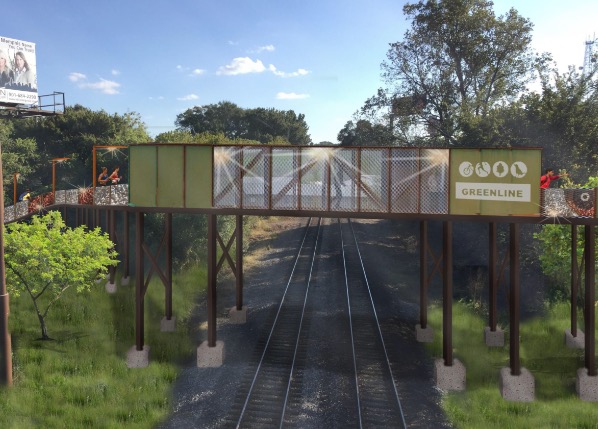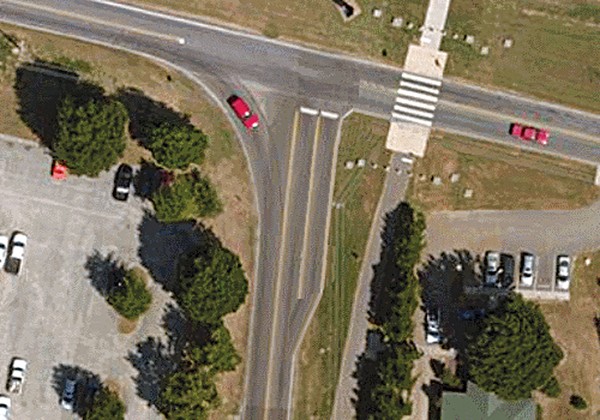 City of Memphis
City of Memphis
Rendering of possible bridge design over active railroad
Two alternative designs to the Shelby Farms Greenline western extension project were presented to the public Thursday by the City’s Division of Engineering and its consultants.
The project, which would extend the Greenline west by about a half of a mile, connecting it to Tobey Park via a new bridge was first introduced to the public in October of last year. After assessing the public’s feedback, the City’s bikeway and pedestrian program manager Nicholas Oyler says those comments and concerns were taken into consideration when developing the alternative design options.
The City, along with its consultants at Neel-Schaffer say the current big question for the public is do they want the emphasis to be on the bridge or the bridge’s amenities.
Option one, officials say, would focus on architecture of the actual bridge, budgeting the majority of funding to make the bridge “iconic.” This “aesthetically pleasing” option, says John Cameron of Neel-Schaffer, would be more visible to passerby, as it would include lighting structures, as well as vertical elements, “some even higher than the trees,” he says.
This, though, he says would limit the amount of funding for amenities along the trail, such as benches and water fountains.
Option two focuses on the amenities along the bridge and at the proposed Tillman and Flicker trailheads, while leaving the bridge design simple and more consistent with other bridges along the Greenline.
Cameron says the cheaper bridge allows for additions and enhancements on the bridge, such as higher-grade pavement, landscaping, bike racks and repair stations, water fountains, benches, and possible shade-providing structures.
Additionally, he says there would be “fun stuff,” like porch-style swinging benches, art, and plazas at both trailheads with space for gathering, food trucks, and live music at the Flicker end.
Oyler says the City will accept public comment on their preferred design option through September 1.
However, Oyler says because the project is mostly federally funded, there are several steps and “hoops to go through” before construction on the bridge can begin.
He says he expects construction to begin five or six years down the road, but in the meantime, there will be continued collaboration with the public.
As County officials discuss plans to possibly extend the Greenline further east to Houston Levee, Oyler says the City will eventually consider plans to connect the Greenline to the Fairgrounds, Midtown, and beyond.
 Brandon Dill
Brandon Dill  Courtesy of Sierra Club
Courtesy of Sierra Club 
